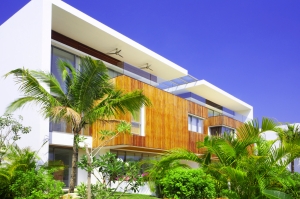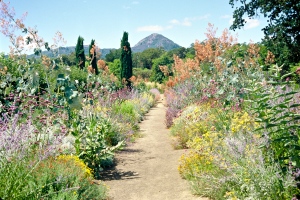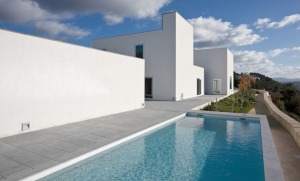I am the author of the Eco Vida Homes blog please go straight to http://www.ecovidahomes.com/eco-design-construction-marbella/
Posted in Uncategorized | Tagged build in Spain, buy land in spain, buy plot in Spain, cost of land in Spain, cost of plots in Spain, price land in spain, price plot in spain | Leave a Comment »
I have been researching the 5th IPCC report. It is very important.
I think the scientists are crap at getting the message across so let me say some vital and, it seems, little understood things. Here is the most important one.
Sustainable Development offers business and PROFIT opportunities. It’s there in black and white on page 25 of the “Summary For Policy Makers IPCC Report”
The secondly BIG point: the positive side effects of sustainable development policies are considerable:
• Improved human health
• Cleaner air and water
• Biodiversity conservation
• Food security
• Energy supply security
• Water security
• Improved workplace productivity
• Net employment gains
• Afforestation (& reverse deforestation)
Thirdly and this is what I think people are bored of hearing if we don’t act now to reduce greenhouse gas emission then as one scientist put it “we are all f*cked if global warming releases gigantic amounts of methane gas from the arctic tundra.” That scientist is a is one of the better communicators! Consequences if we get it wrong are widespread death, injury, ill-health, and disrupted livelihoods across the world.
Fourthly ….it’s NOT EXPENSIVE to put right now perhaps 1% to 4 % of GDP. Now let’s be frank………you don’t notice 1% to 4% of anything!! But it could be very expensive if we delay: that’s 300% to 900% expensive. These are stark figures indeed. I think it means the effective break down of society and the end of our civilisation within a couple of generations (most projections are to 2100).
Finally just in case there should be any doubt about it the scientific debate is over. All scientists from all over the world are in agreement. It’s not a controversial issue.
So why are politicians in the UK squabbling over the cost of energy rather than increasing renewable energy? Why does Spain impose an extra tax on homes that generate their own PV electricity? Why are we spending more money on researching new sources of fossil fuels than new sources of renewable energy? I could go on.
Posted in Green architecture, Original Articles | Tagged IPCC Report Summary | Leave a Comment »
Some people think they blight the beautiful Spanish landscape.
Some people think they are graceful even elegant sculptures.
Here is a quick video (of me) to remind you what they look like.
Please tell me what you think below
Posted in Green architecture | Tagged Earth friendly building in Spain, eco home granada, Eco-friendly building, Eco-friendly house, Ecological house, green home, rebewbale energy spain, sustainable architecture andalucia, Sustainable building, wind turbine granada | Leave a Comment »
1. Build Green in Spain to Save Money
2. Build Green in Spain to Make Money
3. Build Green in Spain to Be More Comfortable
You might be slightly surprised by these rather egotistical answers: more on them later. In the meantime here is the touchy feely part you were expecting. By the way if you skip this you will miss my best joke.
Build Green For Benevolent Reasons
If you accept that the world has finite resources then the use of global resources has to be sustainable if we are to survive as a civilisation or even as a species. You are probably familiar with the idea of spaceship earth. You only have to see a picture of the earth from space to realise we are stranded on it and floating helplessly through space. Polluting the atmosphere on the earth is about as welcome as a fart in a spaceship!
My personal position on this topic is this. If the Save-the-Planet fraternity turn out to be wrong and we have looked after the environment…..well we all end up living in a cleaner environment. If the climate change sceptics turn out to be wrong and we haven’t looked after the environment…….we all die. So, on the balance of risks it probably makes sense to look after the environment.
Happily there are compelling personal reasons to build green. Even climate change sceptics with hard noses might be interested.
Build Green To Save Money
Building green means lower running costs. Eco stands for economical as well as ecological.
If there is an up-front cost for say, double glazed windows which save on heating bills, then after a few years the additional initial cost has been covered by savings in running costs. You have lower running costs forever.
Payback periods are falling all the time as energy prices rise. I could tell you how much energy prices have risen. But, given that we all know that 80% of statistics are made up, let’s just say that energy prices are rising and will continue to rise.
Building green may imply no additional up-front cost. In many cases thoughtful design can lower running costs for example shading windows, window placement to avoid over heating in summer and maximise solar gains in winter, passive cooling methods and a layout that favours reduced energy consumption. Thoughtful design requires a thoughtful architect but otherwise it’s free: you simply save money by building green.
Saving on energy consumption may just be a matter of choice. For example choose a modern biomass stove instead of oil fired central heating: same result, comparable cost, one is green and saves money one isn’t and doesn’t.
Build Green To Make Money
Studies show people will pay up to 30% more for an energy efficient home. That’s an important thought for anyone who is about to invest a considerable sum of money in building a home.
People’s awareness of, and demand for, sustainable architecture is rising all the time. Independent assessors such as BREEAM and LEED and energy certificates which rate your home according to its energy efficiency bring information to the consumer and encourage people to care.
Building Green enhances the value of your investment.
Build Green To Be More Comfortable
Building green will almost certainly make your home more comfortable. It means having airtight windows and doors, i.e. draught free rooms. It means an efficient delivery of heat and coolness such as radiant under floor heating which warms like the sun. Building green means having really effective insulation to prevent overheating in summer and to keep you cool in winter. It also means good sound insulation so you can live in peace and quiet.
Building green means thoughtful architecture which balances your lifestyle, budget, the characteristics of the site, local energy resources and that requires thoughtful architecture that will result in a higher quality of building all round: not some homogenous identikit house which scars the hillside like some modern slum from the early days of the industrial revolution.
We foreigners are living in Spain to enjoy the fabulous sunshine and spectacular views. That means blending the inside with the outside so you can feel in touch with these surroundings in any season. Home should have spaces for the various moods of the day, bathing, playing, reading, cooking, and sharing a meal whatever the weather and whatever the season. That means thoughtful design and that, probably means building green because as you go through a design making choices it is nearly always the case that the green option makes sense.
Build Green for Regulatory Reasons
I was going to tell you about the regulations but after more than 20 years living and amongst my Spanish cousins I have become anarchic like them….. to hell with the regulations!
Posted in Green architecture | Tagged build in Spain, eco home granada, Eco-friendly building, Eco-friendly home, Eco-friendly house, Ecological home, Ecological house, Energy efficient building, green building granada, sustainable architecture granada | Leave a Comment »
Posted in Green architecture, Uncategorized | Leave a Comment »
Whatever the size of your garden there is much you can do to save energy, conserve water, encourage wildlife and biodiversity.
When we plan a garden we like to create spaces for the different moods of the day: dappled shade, scents at night, spaces in full sunlight or for cooking and sharing a meal.
Here are ten at a glance tips for caring for your garden and the wildlife that lives in it and the wider environment.
- Plan a new garden to scale before you buy anything.
- Us the garden to help conserve heat and reduce overheating from the house.
- Choose sustainable and preferably local or recycled / reclaimed materials.
- Look after your top soil during building works.
- Avoid using chemicals, use natural controls instead.
- Plant for your local climate conditions and soil type.
- Take every opportunity to save water and use it wisely.
- Mulch
- Encourage bio diversity with your planting choices.
- Start a compost heap.
Posted in Green architecture | Tagged sustainable garden design granada | Leave a Comment »
Choosing an Architect is a hugely important decision in any design and build project, so it is crucial that you get it right and find someone you are happy to work with. Obviously, if you are looking to build in Spain, or any other foreign country for that matter, the process becomes that little bit more difficult, and that little bit more important to get right. No pressure! Hopefully this article will help you to understand some of the important things to look for in an architect, and how to go about finding and appointing the right person to work for you.
Firstly, let me present you with two scenarios.
Scenario One – You are the Client
Imagine if you will that you are a successful professional approaching retirement age (which may well be true). You’re bored/unhappy with the country you’re living in and you want to get out, so decide to sell your home and build a new house in Spain. This is a pretty exciting stage, and ideas will no doubt start flooding into your head about what your house might be like – a huge swimming pool, nice big kitchen, tiled floors and earthy coloured walls – your dream house begins to appear before your very eyes! With this in mind you start to look for someone who can bring these ideas to life: an architect. You find a company and meet with them but soon start to feel like you’re being backed into a corner and making compromises – your huge swimming pool becomes a pond, you’re kitchen gets tucked away in a small corner, and your tiled floors are replaced with modernist white concrete. What’s more, it’s quite possible that you’ll feel pressured into accepting all these changes, being swept along by a breeze of flowery language and sales pitches, believing that the architect knows best. Before you know it you’re moving into someone else’s dream home, not yours.
Scenario Two – You are the Architect
Now I invite you to sit on the other side of the fence. Imagine you are an established architect in the South of Spain with a solid reputation for providing quality homes for individual clients. Someone contacts you wishing to move to Spain, and is excited about the prospect of building a new house there. All well and good, you arrange to meet with them to discuss possible designs. What you don’t realise is that this particular client is coming armed with some pretty exact ideas of what they want. They come with all sorts of sketches of their dream home, which turns out (rather surprisingly!) to be a bright green castle complete with turrets and a drawbridge – and they refuse to make any compromises! What do you do? Obviously you don’t want to offend the client, and turning down business isn’t good either. However, you live by the reputation of your past projects, and a green castle wouldn’t look great to future clients! I imagine you’d give them a firm ‘no thanks’.
Enough Hypothesising – What Can I Learn From This?
Obviously no one’s really looking to build a green castle (I don’t think!), and equally not many architects will be quite so stubborn as to force you into a house you don’t like. However, by looking at both extremes of what can happen between an architect and a client, we can see that a strong understanding between the two is crucial in order to produce a house that the client will be happy in, and the architect will be proud to show to his future clients.
A thorough screening process before appointing an architect will ensure you get someone who has similar ideas to you, similar approaches to design, and most importantly someone who you get on with and feel you can talk openly with. There’s nothing worse than not wanting to ask a question for fear of it seeming stupid in the eyes of a professional! They are there to work for you, and so should be flexible, open and honest with you. Equally, in selecting an architect, it is important to show some flexibility yourself – after all, they have the training, qualification and experience in the field, so it seems silly not to listen to what they’ve got to say and thoroughly consider any ideas or changes they might suggest.
So, How do I Start Looking for an Architect in Spain?
So far we’ve talked in pretty general terms about what to look for in an architect. Now I want to get more specific, and lay out exactly what you might do in order to find someone suitable and willing to work for you. This is where the process becomes more particular to Spain, since every country has it’s own accrediting bodies, systems and laws relating to architecture and construction. The following points are a few of the things you should do before appointing your architect:
– Consider the language barrier – If you can find an English-speaking (and honest!) architect, they can become invaluable not only in their ability to communicate easily with you, but also to act as a middleman between you and your builders. Even if your builders do speak English, the language barrier is a convenient way of covering up problems or mistakes on their part.
– Where to find an architect – It is best to collect as many names as possible on an initial shortlist, then begin to narrow your search down from there. Talk to people in bars, look in the local phone book, and talk to builders and estate agents (although some will get a commission for recommending certain people so beware!).
– Talk to them – As I said before, it’s really important to have a good working relationship with your architect so, if possible, meet with people on your shortlist face to face, or if not ring them up and talk to them. Ask to see a portfolio of their work and evidence of their licensing in the area you wish to build in.
– Follow up references – It’s also important to ask for references from past clients – people will be happy enough to talk to you, and this can often be the most revealing insight into how good an architect is.
– Ask about fees – An obvious one I suppose, but note that architects fees are normally a percentage of the total costs of the work being done (usually around 5-10% depending on where and with whom you build). Check too whether they operate with a fixed priced contract – although they may be reluctant to do so, this can be massively beneficial to you since any unforeseen problems in the design or build will not affect your overall cost.
And Finally
The biggest thing to bear in mind when choosing an architect in Spain is to be completely thorough. Be thorough in your research, thorough in your selection process, and thorough in your questioning in order to get someone you really respect and enjoy working with. At the same time, remember our man in the green castle and be prepared to listen to changes or advice that come your way from the architect. Remember it’s a two way process, and they have to decide whether they want to work with you too – showing flexibility should help to ensure this is an easy choice for them.
This article was written by Simon Thorpe. Simon Thorpe is a third year architecture undergraduate at Magdalene Cambridge. At the time of writing he is on an internship with Eco Vida. simoncthorpe@hotmail.co.uk
Posted in Uncategorized | Tagged architect spain, build in Spain, construction in Spain, english architect, english architect spain, english speaking architect spain, self build spain | Leave a Comment »
Posted in Uncategorized | Tagged build in Spain, carbon, construction in Spain, eco, eco home, eco house, geothermal, Green architecture, passive, photovoltaic, solar | Leave a Comment »





